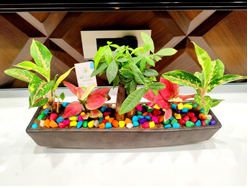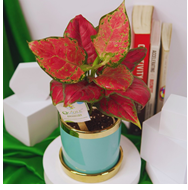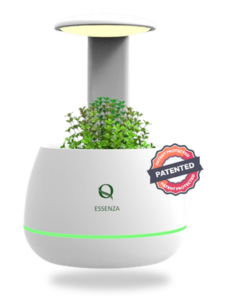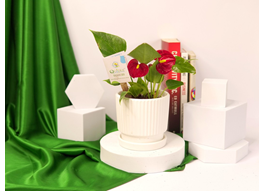
Concrete Jungle to Green Habitation: The Rise of Urban Gardening – Saroj Kumar Panda

When was the last time you felt nature close to you? Or when was the last time you tried to grow a plant on your own? Most of you will answer – ‘Long time ago!’ The world is becoming more urbanized day-by-day and the relationship between nature and urban cities has become more and more weak. So, to revive this relationship the concept of Urban Gardening was introduced. Urban Gardening is the practice of growing plants within a city environment. This concept is not new rather it has roots in ancient civilizations, where people in cities would grow plants inside their home. However, with the industrial revolution and rapid urbanization, green spaces were largely sacrificed for concrete and steel.
However, recently, the growing awareness about environmental issues have reignited interest in urban gardening, which is evident from the fact that the number of urban gardens is increasing that are driven by individuals, communities, and local governments alike.

Perks of Having an Indoor Garden
- Improved Air Quality
Indoor plants help in purifying the air by absorbing pollutants. Through photosynthesis, plants convert carbon dioxide into oxygen, thereby increasing oxygen levels indoors and creating a healthier breathing environment.
- Enhanced Mental Health
Studies have demonstrated that interacting with plants can reduce stress, anxiety, and depression not only that it also decreases blood pressure, improve mood, leading to a greater sense of relaxation and well-being.
- Enhanced Aesthetic
Indoor plants are not limited to physical well-being, they also add beauty, color, and texture to indoor spaces, creating a more inviting and aesthetically pleasing environment
- Improved Sleep Quality
There are certain indoor plants, such as lavender and jasmine, which emit calming scents that promote relaxation and improve sleep quality. Place these plants in your bedrooms and experience a better overall sleep hygiene.

Environmental Benefits
By bringing nature indoors, you get a chance to connect with the natural world and inculcate a sense of environmental guardianship. Also, there will be less wastage of cut flowers and disposable decor items.
Challenges in Implementing an Urban Garden
Urban gardening offers numerous benefits, but implementing it comes with several challenges. Some of the main difficulties include understanding lighting conditions, meeting the watering needs of plants, choosing the right potting mix, managing fertilization, and dealing with limited space.
Solution
- Plant Selection: Choose plants as per your lighting condition, e.g., for low lighting condition, plants such as ZZ plant, Monstera and Dracena
- Watering Guidelines: Always water your plants when the top inch of soil is dry. Provide just enough water so that the soil dries out completely within three days; if not then reduce the amount of water.
- Potting Mix: Create custom potting mixes tailored to the specific needs of different plants. Common ingredients include peat moss, perlite, vermiculite, coco-chips, compost, and sand.
- Fertilization: Apply NPK fertilizer every 15 days by dissolving 1 gram of NPK in 1 liter of water and spraying it on the underside of the leaves.
- Vertical Gardening: Utilize vertical space by growing plants on trellises, walls, or vertical planters. This method is ideal for small spaces and can create striking visual effects.
- Container Gardening: Use containers of various sizes to grow plants on balconies, rooftops, and patios. Containers can be moved easily and arranged to optimize space.
Smart Section of Urban Gardening

Quidle Essenza: A Smart Planter
It is a small nature-loving companion ready to look after users’ valuable plants. This smart planter eliminates the need for plant parenting guesswork. It has features like Artificial Sunlight, Self-Watering system that helps to grow anything inside your home/office spaces.

Conclusion
The rise of urban gardening shows a significant shift in how we envision urban living. Evolving concrete jungles into green habitation not only enhances the beauty and livability of our homes and cities but also addresses critical environmental, social, and health issues. As more people embrace this movement, our cities will continue to evolve into thriving ecosystems where nature and urban life co-exist harmoniously.
About the Author
Saroj Kumar Panda is a dynamic entrepreneur and an alumnus of the National Institute of Technology (NIT) Rourkela. As the founder of Quidle Enterprise Pvt. Ltd., he has been instrumental in driving innovation in urban gardening. His startup is supported by several notable organizations, including Startup India, the Government of Odisha, the Ministry of Electronics and Information Technology (MeitY), and the National Initiative for Developing and Harnessing Innovations (NIDHI), among others.


